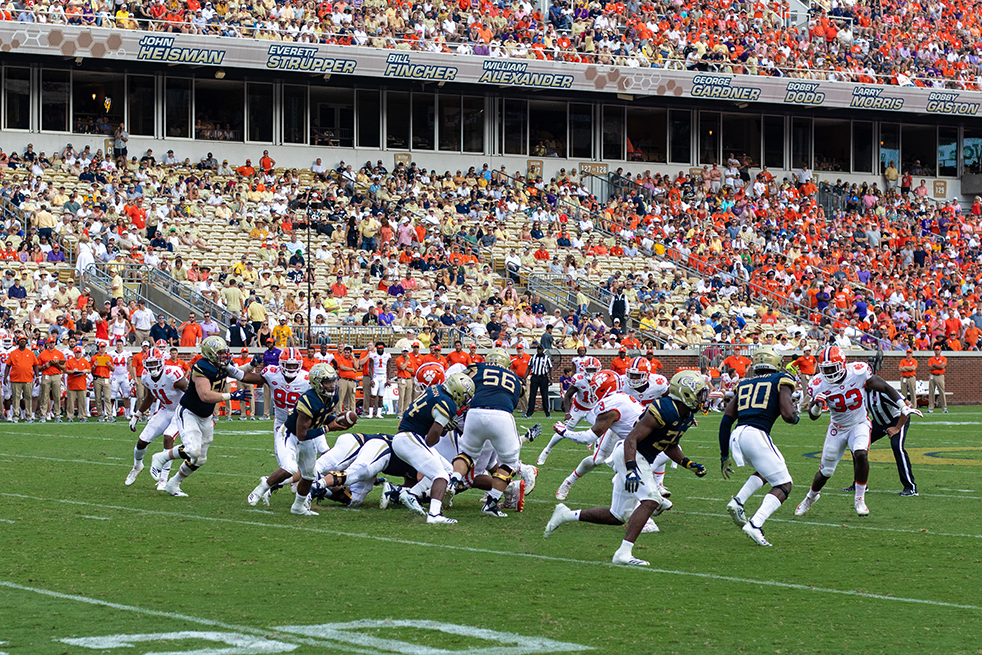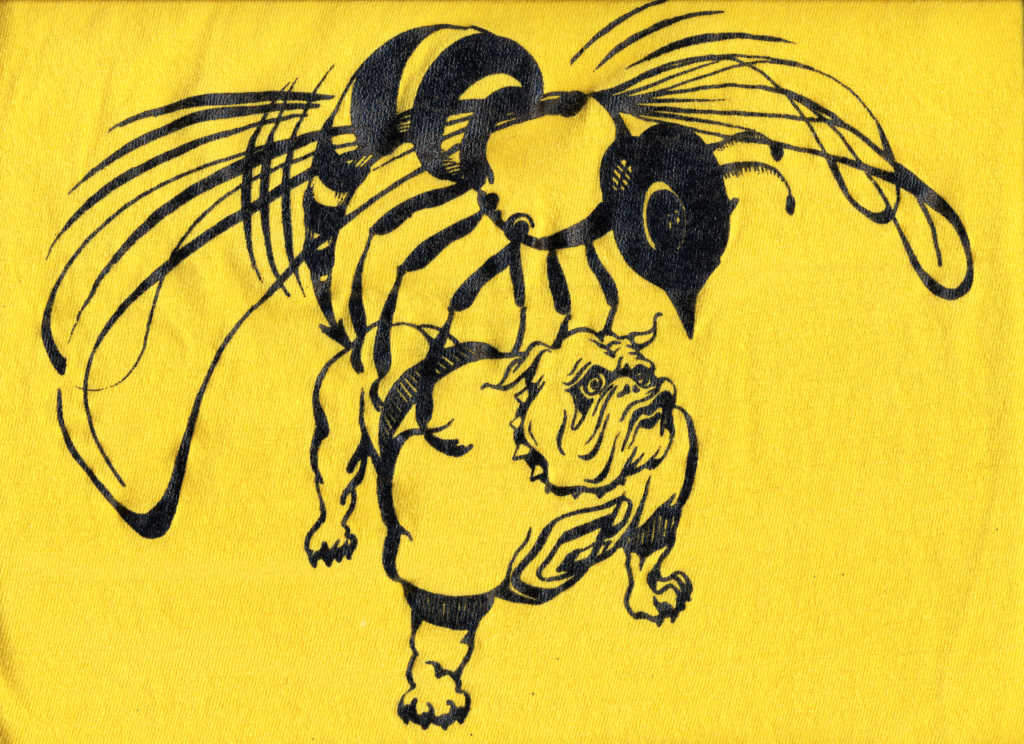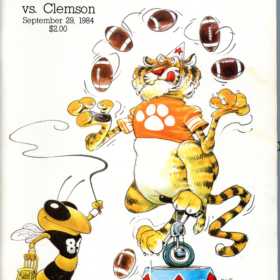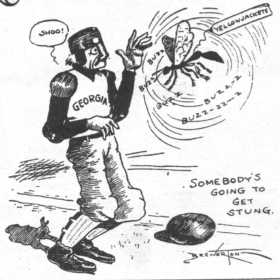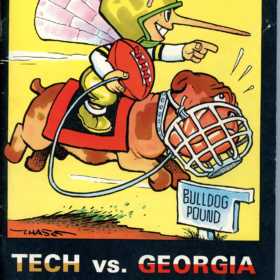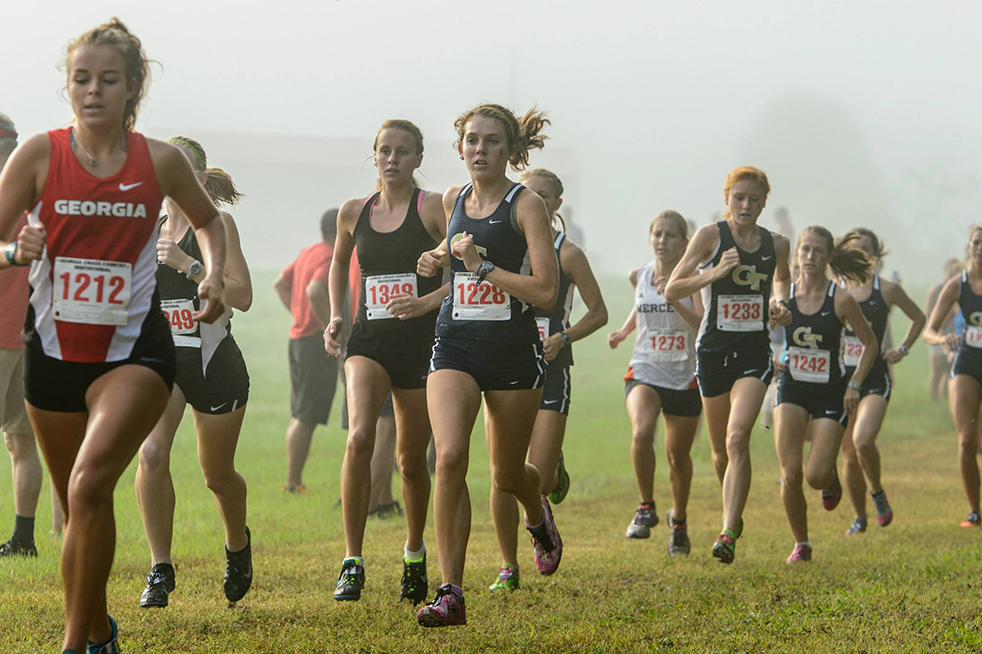
After Tech’s 49-21 drubbing at the hands of the Clemson Tigers Saturday, Paul Johnson announced that he would be taking a more active role in Tech quarterback’s development and conditioning. Tech, which leads the country in fumbles per game at 4.0, saw its quarterbacks fumble six times on Saturday, including multiple fumbles on the snap.
Johnson expressed considerable discontent with how Tech played Saturday, saying, “I’m frustrated with the way we’re playing… it’s embarrassing.” Johnson singled out his quarterbacks, senior and team captain TaQuon Marshall and redshirt freshman Tobias Oliver, promising that “[Tech is] going to get better fundamentally at quarterback.”
Marshall shouldered some blame for Tech’s issues with ball handling during the game. “I take responsibility for it — bad pitches, should have put the ball in some guys’ hands, [and] unfortunately that put us behind the chains.” In response to Johnson’s comments that he would be more active in coaching QBs, Marshall again pointed to his pitching as a likely area for Johnson to target for improvement. “I think one of the things he’s going to pinpoint is pitching the ball on the perimeter. I know he said that about the end of the game when Tobias is in … I think that’s one of the things he’s going to emphasize, like, ‘Hey, when they have the guys blocked, we need to get the ball on the perimeter, so the A-backs can work.’”
The Jackets saw Johnson in action in a more hands-on role this week, according to the Atlanta Journal-Constitution. Via the report, Marshall indicated that Johnson had made good on his promise, especially during the option-period of practice, when quarterbacks practice coordinating with the other offensive backs. Marshall was quoted as saying, “We’re definitely working on the quarterback and A-back and B-back pitch relationship because that’s one of the things we’ve been having trouble with.”
Tech has floundered early this season, though the fault is not wholly on Marshall and Oliver, as Johnson acknowledged, noting that the offensive line had struggled against Clemson as well. “If you have no lane, there’s nowhere for you to go… so it’s not all TaQuon,” Johnson acknowledged.
Still, most of Tech’s struggles on Saturday where wholly between the quarterback and center; the Jackets lost 74 yards against Clemson on tackles for loss, and many of those yards resulted from fumbles on the snap, dropped hand-offs and pitch plays.
But the real focal point of Tech’s struggles this season has been the defense: The Jackets have failed to pressure the backfield consistently, frequently allowing deep passes and open scrambles. Tech has allowed the highest completion rate by opponents of any ACC team, while recording just four sacks and thirteen tackles for loss — both, again, the worst in the ACC.
Tech has a reprieve from their tough conference schedule this Saturday, facing off against Bowling Green State who have allowed 44 points per game this season, the second worst figure in all of college football. The clock is running out on Tech’s season, however; already 0-2 in the conference, Tech faces an uphill climb to a conference championship game. With how weak the ACC Coastal Division has been, anything is possible, but nothing will be easy.

